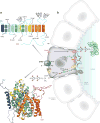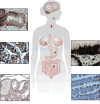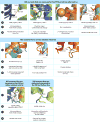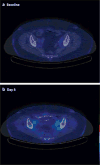The Sodium/Iodide Symporter (NIS): Molecular Physiology and Preclinical and Clinical Applications
- PMID: 28192058
- PMCID: PMC5739519
- DOI: 10.1146/annurev-physiol-022516-034125
The Sodium/Iodide Symporter (NIS): Molecular Physiology and Preclinical and Clinical Applications
Abstract
Active iodide (I-) transport in both the thyroid and some extrathyroidal tissues is mediated by the Na+/I- symporter (NIS). In the thyroid, NIS-mediated I- uptake plays a pivotal role in thyroid hormone (TH) biosynthesis. THs are key during embryonic and postembryonic development and critical for cell metabolism at all stages of life. The molecular characterization of NIS in 1996 and the use of radioactive I- isotopes have led to significant advances in the diagnosis and treatment of thyroid cancer and provide the molecular basis for studies aimed at extending the use of radioiodide treatment in extrathyroidal malignancies. This review focuses on the most recent findings on I- homeostasis and I- transport deficiency-causing NIS mutations, as well as current knowledge of the structure/function properties of NIS and NIS regulatory mechanisms. We also discuss employing NIS as a reporter gene using viral vectors and stem cells in imaging, diagnostic, and therapeutic procedures.
Keywords: NIS mutations; gene transfer studies; imaging and radioiodide therapy; sodium/iodide symporter; structure/function; thyroid hormones.
Figures






References
-
- Baumann E. Über das Thyrojodin. Münch Med Wschr. 1896;43:309–12.
-
- Baumann E. Über den Jodgehalt der Schilddrusen von Menchen und Tieren. Hoppe-Seylers Z Physiol Chem. 1896;22:1–17.
-
- Hertz S, Roberts A, Means JH, Evans RD. Radioactive iodine as an indicator in thyroid physiology. J Pharmacol Exp Ther. 1940;128:565–76.
-
- Seidlin SM, Marinelli LD, Oshry E. Radioactive iodine therapy: effect on functioning metastases of adenocarcinoma of the thyroid. JAMA. 1946;132:838–47. - PubMed
-
- Dai G, Levy O, Carrasco N. Cloning and characterization of the thyroid iodide transporter. Nature. 1996;379:458–60. - PubMed
Publication types
MeSH terms
Substances
Grants and funding
LinkOut - more resources
Full Text Sources
Other Literature Sources

